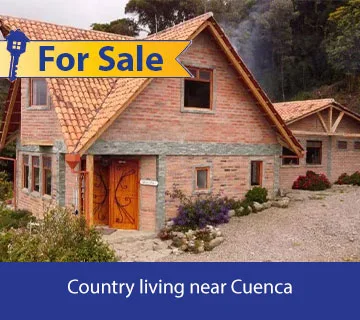The Eagle Flies With The Condor: Part 1
By Louis Bourgeois
The bird which best represents North America, and the national bird of the U.S., is the eagle. The bird which best represents Andean South America, and the national bird of Colombia, Ecuador, Bolivia and Chile, is the condor. There is a saying among the indigenous shamans of the Andean tribes, and particularly among the Incas, that speaks of the time when the eagle would fly with the condor. The integration of the cultures of North America and the Andean region of South America would lead to an awakening, or the birth of a new earth.
particularly among the Incas, that speaks of the time when the eagle would fly with the condor. The integration of the cultures of North America and the Andean region of South America would lead to an awakening, or the birth of a new earth.
My blog will examine my journey of discovery and awakening, a journey that included several years of exploration of Colombia, Ecuador and Peru. The blog will later showcase how my partnership with a Cuencana and my life in Cuenca qualifies as evidence of “a new earth.”
I was first drawn to the Latin culture as the result of reading a book called The Mambo Kings Play Songs of Love. According to Wikipedia “The Mambo Kings Play Songs of Love is a 1989 novel by Oscar Hijuelos about the lives of two Cuban brothers and musicians, Cesar and Nestor Castillo, who immigrate to the United States and settle in New York City in the early 1950s.”
Shortly after reading this book I was working a job as a live-in chef for a wealthy matron in Palm Beach, Florida. I heard about the world premiere of the movie based on this book, and I arranged to attend. Before the film was presented, a group gathered on the Miami stage including the author of the book, the film’s director, and the two featured Cuban musical stars, Celia Cruz and Tito Fuentes. I couldn’t understand why I was so struck by the energy of the Latin music, but I was.
this book, and I arranged to attend. Before the film was presented, a group gathered on the Miami stage including the author of the book, the film’s director, and the two featured Cuban musical stars, Celia Cruz and Tito Fuentes. I couldn’t understand why I was so struck by the energy of the Latin music, but I was.
Some years later I read the novel by Gabriel Garcia Marquez, Love in the Time of Cholera, and again I was in a swoon for the style of writing and the story. It became clear that one day I was destined make a pilgrimage of sorts to visit Cartagena, Colombia, partly in homage to my new favorite novelist.
Beginning in 2009 I began my travels in Central and South America. I had managed to find a job in Minnesota, caretaker for a flower farm and outdoor wedding venue, that allowed me six months free each winter.
Only because I was somewhat familiar with Costa Rica, I began my Latin exploration there. But after two winters in the relative safety of a heavily gringo population in Costa Rica, I boldly traveled to Colombia alone. This was the turning point for me, as there were things about the people, culture and music of Colombia that were intoxicating.
Over two winters I was able to experience Colombia in two different ways. The first winter I spent six weeks visiting a friend in Bogota, staying in her family home. She was a professor at the university teaching salsa music and dance. I was entranced, both with my friend and her family, and also with the music.
Before Bogota, I spent one month exploring parts of Ecuador, and I am sure that the seed was planted, especially after climbing up to the edge of the glacier of Cotopaxi, the second tallest mountain in Ecuador. After my time in Bogota, which included trips to the coffee region around Armenia and time in a very sweet pueblo named Guaduas, I fulfilled an island fantasy, spending three months on the beach of Puerto Plata in the Dominican Republic. It was a wonderful vacation but I knew that I could never live and flourish in the islands.
During my second winter, I split my six months between the city of Medellin and a country house two hours from the city in a resort area named Guatape. I loved most everything about Medellin and the surrounding area. The people of the area, called paisa, are warm-hearted and the children are happy, which in general can be said about all the Latin cultures. But I strongly preferred Medellin over the capital city Bogota. The weather is milder and the city’s public transit system is great. I learned that in Medellin, more than other parts of Colombia, you find many people with the mix of the “three bloods” (native Indian red, Carib black, and Spanish white). This accounts for an extraordinary percentage of very beautiful women and handsome men.
I can share that my experience of dating Latin women was remarkable. After two marriages and a number of relationships in my life in the U.S., I was immediately impressed with the sweetness and affection (combined defined by the Latin word cariñosa). And being of average height in the U.S., never wealthy, and now 60-plus-years-old, I was hardly a “catch” back home.
In the new paradise, I suddenly found myself very much the “catch,” being relatively tall, relatively rich, and handsome. Plus there appeared very little stigma about a much younger woman dating an older gringo. Tenacious in their pursuit of a gringo boyfriend, I found myself quickly entangled, as in engaged, to my first Latin girlfriend in Costa Rica, my girlfriend in Bogota, and now to another girlfriend in Medellin. Luckily engagement rings are simple and inexpensive. And luckily I was each year back in the U.S. for my work, and no long distance relationship with a Latina can endure six months of separation.
__________________


















